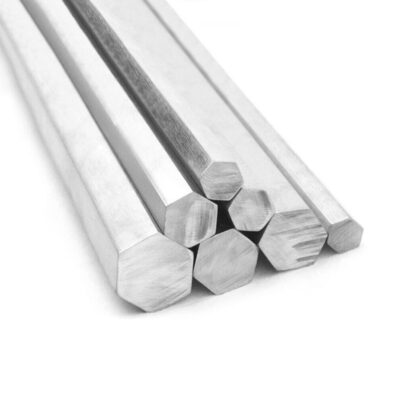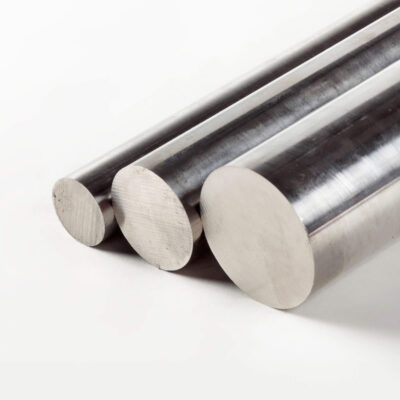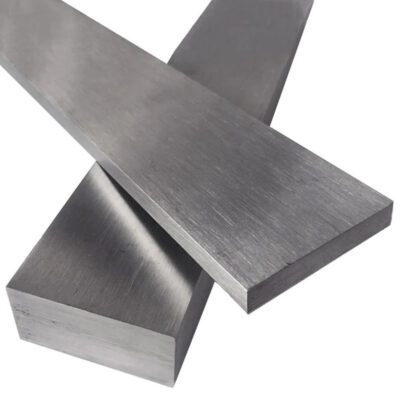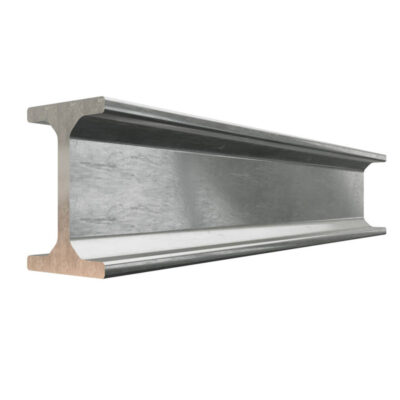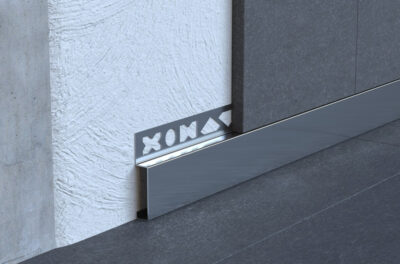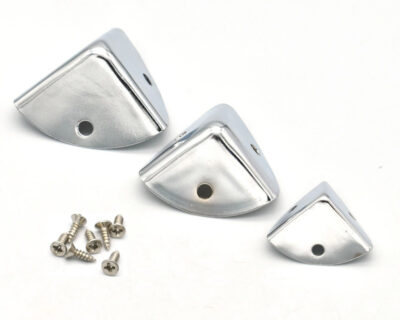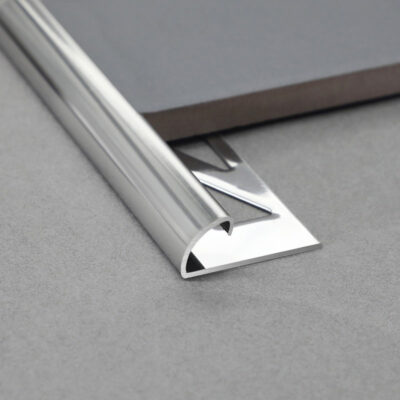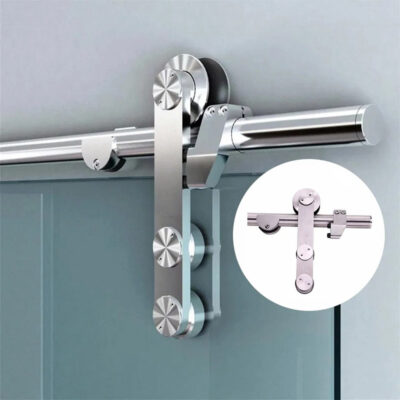The Critical Role of Stainless Steel in Modern Industry
The manufacturing world runs on stainless steel. From the medical tools in surgical suites to the massive vessels in chemical processing plants, this versatile material has become indispensable across virtually every sector of modern industry. What makes this particular alloy so central to our industrial infrastructure isn’t just its corrosion resistance—though that’s certainly valuable—but rather its remarkable combination of properties that simply can’t be found elsewhere at comparable cost points.
I recently toured a food processing facility where every surface that contacted ingredients was constructed from 316L stainless. The plant manager explained that anything less would quickly deteriorate under constant cleaning with caustic solutions. “We learned this lesson the expensive way,” he confided. “Saving a few dollars per square foot on material costs ultimately cost us ten times more in emergency replacements and production downtime.”
The global stainless steel market reached approximately 52.2 million metric tons in 2021, with projections indicating continued growth at a CAGR of 6.3% through 2028. This expansion reflects not just increasing volumes but also evolving applications as engineers continue finding new ways to leverage stainless steel’s unique characteristics. Behind these impressive numbers stands a complex network of E-Sang and other suppliers, manufacturers, and distributors that form the backbone of industrial material provision.
Selecting the right stainless steel supplier has become increasingly challenging in this environment. With global trade uncertainties, fluctuating raw material prices, and growing emphasis on sustainability credentials, procurement professionals face a multidimensional decision-making process that extends far beyond simple price comparisons.
Key Considerations When Selecting a Stainless Steel Supplier
When evaluating potential stainless steel suppliers, several factors deserve careful attention beyond the obvious consideration of price. Quality assurance systems should be at the top of any assessment criteria. Leading suppliers maintain comprehensive quality management systems certified to ISO 9001 standards, with many adding industry-specific certifications like AS9100 for aerospace applications or ISO 13485 for medical device materials.
Dr. Margaret Chen, metallurgical consultant to several Fortune 500 manufacturers, emphasizes the importance of certification validation: “Don’t just accept that a supplier has certifications—request recent audit reports and understand their quality control processes. The difference between suppliers often lies in how consistently they implement their quality systems, not just in having the certificate on the wall.”
Material traceability represents another crucial factor. Premium stainless steel suppliers maintain complete chain-of-custody documentation from melt to delivery, enabling full traceability of every batch. This capability proves particularly important in regulated industries where material provenance forms an essential component of compliance requirements.
Technical support capabilities vary dramatically among stainless steel suppliers. While some function essentially as metal warehouses, others employ experienced metallurgists and application engineers who can provide invaluable guidance on material selection, fabrication challenges, and performance optimization. This expertise becomes particularly valuable when working with specialized grades or demanding applications.
During a recent project involving high-temperature hydrogen service, I encountered significant differences in supplier capabilities. Some could only provide standard material test reports, while others offered detailed hydrogen embrittlement resistance data specific to our operating conditions. This level of technical support ultimately proved decisive in our supplier selection process.
Inventory availability and management practices represent another differentiation point. The best stainless steel suppliers maintain strategic inventories of common grades and dimensions, enabling them to respond quickly to urgent requirements while still offering competitive pricing through volume purchasing. Some have developed sophisticated inventory management programs that integrate with customer production schedules to ensure material availability without excessive carrying costs.
Navigating the Global Stainless Steel Supply Market
The global landscape of stainless steel production presents both opportunities and challenges for buyers. Regional production specialties have emerged over decades, with certain areas establishing dominance in particular products or grades. China currently accounts for over 50% of global stainless steel production, though quality consistency can vary significantly between producers. European manufacturers, particularly in Germany and Italy, maintain strong reputations for specialized high-performance grades and precision products.
Tariffs and trade policies have created a complex maze for international steel procurement. The implementation of Section 232 tariffs in the United States significantly altered traditional supply patterns, with many buyers forced to reconsider longstanding supplier relationships. Similarly, the European Union’s safeguard measures have reshaped import patterns across the continent.
James Davidson, procurement director for a major appliance manufacturer, notes that navigating this environment requires constant vigilance: “We’ve had to develop much more sophisticated country-of-origin tracking and forecasting capabilities. A supplier who seems competitive today might face significant tariffs tomorrow, completely changing the cost equation.”
Price volatility remains an enduring challenge in stainless steel procurement. The alloy surcharge mechanism, which adjusts pricing based on fluctuating nickel, chromium, and molybdenum costs, creates significant uncertainty in budgeting and contract pricing. Sophisticated buyers have developed various strategies to manage this volatility, including hedging instruments, formula-based contracts, and strategic inventory positioning.
The table below illustrates the dramatic fluctuations in key raw material costs affecting stainless steel pricing over a recent 12-month period:
| Raw Material | Starting Price (USD/MT) | Peak Price (USD/MT) | Ending Price (USD/MT) | Volatility (Max % Change) |
|---|---|---|---|---|
| Nickel | $13,950 | $42,995 | $22,550 | +208% |
| Chromium | $9,250 | $11,900 | $8,800 | +29% |
| Molybdenum | $34,500 | $44,800 | $38,200 | +30% |
Emerging markets present both opportunities and risks for stainless steel sourcing. India has rapidly expanded its production capacity and now ranks as the second-largest global producer. Vietnamese and Indonesian mills have also increased their market presence, often offering competitive pricing but sometimes struggling with consistent quality and delivery reliability.
Technical Specifications and Grade Selection
Understanding the technical aspects of stainless steel grades constitutes perhaps the most critical element of effective supplier selection. The seemingly minor differences between grades can dramatically impact performance in specific applications. While 304/304L remains the workhorse austenitic grade used across numerous industries, specialized applications often require more carefully selected alloys.
For marine environments, the distinction between 316 and 316L becomes crucial. Though chemically similar, the low-carbon variant (316L) provides superior corrosion resistance in welded components by preventing chromium carbide precipitation that can lead to intergranular corrosion. Some suppliers maintain inventory of only one variant to reduce carrying costs, potentially compromising application suitability.
Extreme environments demand specialized grades that may challenge supplier capabilities. Duplex stainless steels like 2205 offer excellent combinations of strength and corrosion resistance for offshore oil and gas applications. Super duplex grades like S32750 extend performance even further but require exacting production controls to maintain proper microstructure. Not all suppliers possess the expertise or quality systems to reliably deliver these specialized materials.
The following table summarizes key characteristics of common stainless steel grades and their typical applications:
| Grade | Type | Key Properties | Common Applications | Supply Considerations |
|---|---|---|---|---|
| 304/304L | Austenitic | Good general corrosion resistance, excellent formability | Food equipment, architectural, general purpose | Widely available from most suppliers, often stocked in multiple forms |
| 316/316L | Austenitic | Improved corrosion resistance, particularly to chlorides | Marine, chemical processing, pharmaceutical | Generally well-stocked by major suppliers, premium over 304 |
| 430 | Ferritic | Moderate corrosion resistance, magnetic | Automotive trim, appliances, indoor applications | Less commonly stocked in full range of forms |
| 2205 | Duplex | High strength, excellent corrosion resistance | Oil & gas, chemical transport, desalination | Limited supplier base with proper certifications, longer lead times |
| 17-4PH | Precipitation Hardening | High strength, moderate corrosion resistance, can be heat treated | Aerospace components, high-strength parts | Specialized suppliers, typically requires testing certificates |
Beyond the standard grades, several emerging alloys present interesting possibilities for demanding applications. Nitrogen-enhanced stainless steels offer improved strength and corrosion resistance compared to traditional grades. Some manufacturers have developed proprietary alloys optimized for specific environments or manufacturing processes, though these typically come with higher costs and limited supplier options.
Dr. Thomas Reynolds, materials engineering professor at Northeastern University, advises procurement teams to move beyond simple grade specifications: “The same nominal grade from different suppliers can exhibit significantly different performance characteristics based on production methods, quality control practices, and minor compositional variations. Working with suppliers who understand these nuances can make the difference between application success and costly failure.”
Building Strategic Supplier Relationships
The most sophisticated procurement organizations have moved beyond transactional purchasing toward strategic supplier relationships that create value beyond basic material provision. These partnerships can yield benefits ranging from technical collaboration on new applications to supply assurance during market disruptions.
Collaborative development represents one powerful aspect of these relationships. When a medical device manufacturer I consulted for needed a specially formulated stainless steel with enhanced MRI compatibility, they engaged early with selected suppliers to develop custom melt specifications. This collaboration yielded a proprietary formulation that provided a significant competitive advantage while ensuring a reliable supply source through development exclusivity agreements.
Contract structures have evolved to balance price protection with flexibility. Traditional fixed-price agreements have largely given way to more sophisticated models that incorporate raw material indices while protecting conversion costs. Some buyers have developed tiered pricing systems that reward suppliers for consistency, quality, and innovation beyond basic material provision.
Supply assurance programs have gained prominence following recent global disruptions. Leading stainless steel suppliers have implemented various mechanisms to prioritize allocation during shortage situations, from formal reservation systems to dedicated capacity agreements. These programs typically come with commitments regarding volume, forecast accuracy, and relationship longevity.
A major food equipment manufacturer demonstrates the value of these strategic relationships. Rather than maintaining multiple qualified suppliers for each stainless steel grade, they’ve developed deep partnerships with two primary suppliers who receive approximately 85% of their total volume. In exchange, these suppliers maintain dedicated inventory reserves, provide priority production scheduling, and assign technical specialists to support new product development. During the severe supply disruptions of 2021, this manufacturer maintained nearly uninterrupted material flow while competitors faced extended delays.
Sustainability and Ethical Considerations
Environmental considerations have moved from peripheral concerns to central selection criteria for many stainless steel buyers. The production process is energy-intensive, with significant emissions implications depending on the energy sources used. Mills powered predominantly by renewable energy can offer products with substantially lower carbon footprints than coal-dependent operations.
Stainless steel’s inherent recyclability represents one of its strongest environmental attributes. The material contains valuable alloying elements that make recovery economically attractive, resulting in recycling rates exceeding 85% globally. Leading suppliers now offer products with certified recycled content percentages, though verification methodologies vary in rigor.
The carbon footprint differential between production methods can be substantial. Electric arc furnace production typically generates 1.5-2.5 tons of CO₂ per ton of stainless steel, while induction furnace methods may reduce this to 0.8-1.8 tons. The most efficient mills utilizing high percentages of renewable energy have achieved footprints below 0.6 tons CO₂ per ton of product.
Environmental Product Declarations (EPDs) have emerged as important tools for comparing supplier sustainability credentials. These standardized documents provide verified environmental impact data across multiple categories. Forward-thinking stainless steel suppliers have invested in developing EPDs for their product ranges, enabling buyers to make more informed decisions based on actual performance rather than general claims.
Supply chain transparency extends beyond environmental concerns to encompass social responsibility aspects. Responsible suppliers maintain robust systems to ensure ethical labor practices throughout their supply chains, particularly regarding raw material sourcing from regions with documented human rights challenges.
Looking ahead, several emerging trends will likely reshape stainless steel sustainability:
- Hydrogen-based production technologies that could dramatically reduce carbon emissions
- Enhanced traceability systems using blockchain or similar technologies to verify ethical sourcing claims
- Increased regulatory pressures requiring formal carbon accounting and reduction commitments
- Growing market premiums for verifiably sustainable materials
One procurement director for a major consumer products company offered this perspective: “Five years ago, sustainability was something we asked about after covering technical and commercial requirements. Today, it’s a parallel evaluation track with equal weight in our supplier selection process, and I expect it will become the primary differentiator within another five years.”
Overcoming Common Challenges with Stainless Steel Procurement
Despite its ubiquity and mature supply chains, stainless steel procurement presents several persistent challenges that require thoughtful strategies to overcome. Lead time management tops the list of operational concerns for many buyers. Standard lead times from mills can exceed 16 weeks for certain products, creating planning challenges for manufacturers with variable demand patterns.
Various approaches have emerged to address this challenge. Some organizations have developed sophisticated forecasting models that incorporate leading indicators from their end markets to predict material requirements more accurately. Others have established stocking programs with distributors or mills that maintain inventory based on historical usage patterns. The most advanced systems integrate real-time production data with supplier systems to automatically trigger replenishment orders.
Quality inconsistency represents another significant challenge, particularly when sourcing globally. Material that meets basic specification requirements can still exhibit subtle variations that impact fabrication or performance. These differences may manifest as inconsistent forming characteristics, variable corrosion resistance, or unpredictable response to heat treatment.
Developing comprehensive receiving inspection protocols helps identify quality issues before materials enter production. These may include enhanced testing beyond standard mill certifications, particularly for critical applications. Some manufacturers have implemented supplier quality rating systems that track defect rates, documentation accuracy, and responsiveness to quality concerns.
During my time leading procurement for an industrial equipment manufacturer, we encountered persistent quality variations in supposedly identical 316L sheet from different suppliers. Investigation revealed subtle differences in rolling practices that affected grain structure and directional properties. By working closely with our preferred supplier to standardize these secondary characteristics, we significantly reduced forming variability in our production process.
Price negotiation presents particular challenges given stainless steel’s volatile cost components. The traditional annual contract model has largely given way to more dynamic approaches. Some buyers have adopted index-based pricing formulas that adjust automatically based on published commodity prices. Others negotiate fixed conversion costs while allowing raw material components to float with market indices.
Strategic sourcing approaches can yield substantial benefits in this environment. By consolidating volume with fewer suppliers, organizations often secure preferential pricing, enhanced technical support, and improved supply assurance. This consolidation must be balanced against risk management considerations, particularly in the current environment of supply chain disruptions.
Inventory optimization techniques have evolved to balance carrying costs against supply risk. Traditional min/max systems have been supplemented with more sophisticated approaches that consider supplier lead time reliability, price volatility patterns, and criticality to production. Some manufacturers have implemented vendor-managed inventory programs where suppliers assume responsibility for maintaining appropriate stock levels based on consumption data.
The Future of Stainless Steel Supply Relationships
The landscape of stainless steel supply continues evolving in response to market forces, technological advances, and changing customer expectations. Several emerging trends deserve attention from procurement professionals planning their long-term sourcing strategies.
Digitalization has begun transforming traditional supplier relationships. Advanced stainless steel suppliers have implemented digital platforms that provide customers with real-time order status, quality documentation, inventory availability, and even production scheduling information. These systems reduce administrative overhead while improving transparency and responsiveness.
Technical specialization will likely increase among suppliers. Rather than attempting to serve all markets with comprehensive product ranges, more suppliers are focusing on specific industries or application areas where they can develop distinctive expertise and service models. This specialization enables deeper technical support and more tailored product offerings.
The acceleration of sustainability initiatives presents both challenges and opportunities. Suppliers investing in reduced-carbon production methods, enhanced recyclability, and transparent reporting will likely gain competitive advantages as environmental considerations become increasingly central to purchasing decisions. Those failing to adapt risk being excluded from growing segments of the market.
Supply chain resilience has emerged as a primary concern following recent global disruptions. The historical emphasis on lean inventory and just-in-time delivery is being balanced against risk mitigation strategies including regional sourcing, strategic buffer stocks, and supplier diversification. This rebalancing may reshape supplier relationships and selection criteria for years to come.
As we navigate these evolving dynamics, the most successful stainless steel procurement strategies will likely be those that balance multiple factors: technical performance, commercial terms, supply security, and sustainability credentials. The transactional procurement approaches of previous decades are giving way to more sophisticated models that recognize the strategic importance of these critical materials and the suppliers who provide them.
What remains constant is the fundamental importance of building relationships with suppliers who understand your specific requirements, can provide materials that consistently meet your technical needs, and share your commitment to continuous improvement. In an increasingly complex global market, these partnerships represent perhaps the most valuable asset in ensuring reliable access to quality stainless steel.
Frequently Asked Questions About Choosing a Stainless Steel Supplier
Q: How do I find a reliable stainless steel supplier?
A: Finding a reliable stainless steel supplier involves several key steps. First, assess their sources to ensure they provide high-quality materials. Ask about their production capacity, delivery methods, and quality standards compliance. Additionally, inquire about customization options and return policies to ensure they meet your project needs.
Q: What should I look for in a stainless steel supplier’s quality standards?
A: When evaluating a stainless steel supplier’s quality standards, look for compliance with industry standards such as those set by ASTM or ISO. Ensure they can provide documentation proving their adherence to these standards. Also, consider their experience with different grades of stainless steel, such as 304 or 316, to ensure they can supply materials suitable for your application.
Q: Can a stainless steel supplier customize products to fit my project’s specific needs?
A: Yes, many stainless steel suppliers offer customization options. They might be able to provide specific grades, shapes, or finishes tailored to your project requirements. For instance, if you need a particular type of stainless steel grade like 430F, confirm with the supplier that they can provide it. Customization ensures you get exactly what you need without compromising on quality or features.
Q: What are the typical costs associated with purchasing from a stainless steel supplier?
A: The typical costs associated with purchasing from a stainless steel supplier include the quoted price of the materials. However, ask about additional costs such as delivery charges, fuel surcharges, or restocking fees for returns. Understanding all these costs will help you compare prices accurately across different suppliers and ensure you account for every expense in your budget.
Q: How important is liability insurance when selecting a stainless steel supplier?
A: Liability insurance is crucial when selecting a stainless steel supplier. It protects you and your business in case there are issues with the materials supplied, which could lead to additional costs or damages. Always ask for proof of liability insurance to ensure the supplier can cover potential risks associated with their products.

